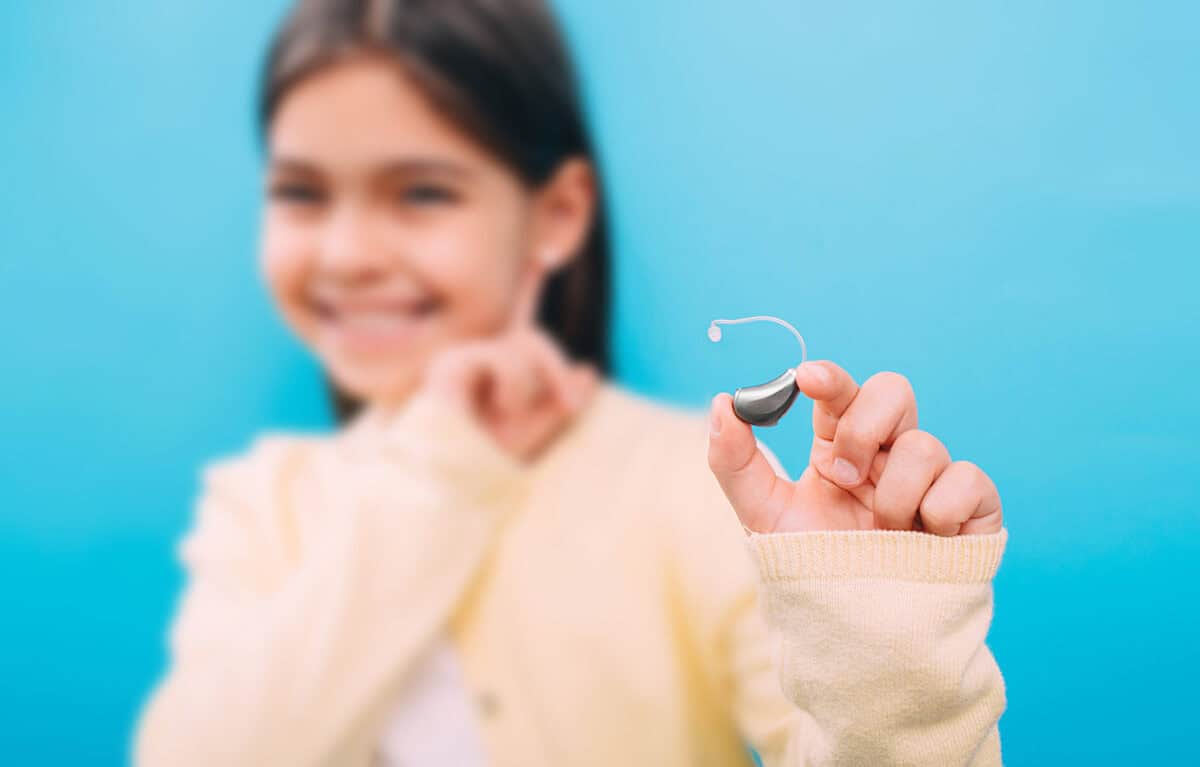- How to Recognize the First Signs of Hearing Loss - June 5, 2025
- Understanding the Connection Between Tinnitus and Weather - May 17, 2025
- The Most Unexpected Reasons Hearing Aids Can Malfunction - May 9, 2025
Bringing your child to a hearing aid fitting can feel like a significant step in their journey towards better hearing health. It’s natural to have questions and uncertainties about the process. In this guide, we’ll provide you with valuable insights into what to expect during your child’s hearing aid fitting appointment!
Comprehensive Assessment of Hearing Health
The first step in the hearing aid fitting process is a comprehensive assessment of your child’s hearing health. This may involve a hearing health exam conducted by a provider to determine the extent of any hearing loss and the most appropriate course of action. During this exam, your provider will evaluate your child’s hearing abilities using various tests and techniques, providing valuable insights into their specific needs.
Once your child’s hearing needs have been assessed, the next step is selecting the most suitable hearing aid style and features. There are various types of hearing aids available, including behind-the-ear (BTE), in-the-ear (ITE), and completely-in-the-canal (CIC) models. Your provider will work with you to choose the best option based on factors such as your child’s age, lifestyle, and degree of hearing loss. Additionally, they will discuss available features such as noise reduction, directional microphones, and wireless connectivity, ensuring the chosen device meets your child’s unique requirements.
Once the hearing aids have been selected, they will be custom-fitted to your child’s ears for optimal comfort and performance. Your provider will take impressions of your child’s ears to create custom molds for the hearing aids. These molds ensure a secure fit and prevent feedback or discomfort during use. The provider will then program the hearing aids according to your child’s specific hearing needs, adjusting settings such as volume, frequency response, and sound processing algorithms to provide optimal sound quality and clarity.
Education and Training on Hearing Aid Use
During the fitting appointment, your provider will provide comprehensive education and training on how to use and care for the hearing aids. This may include instructions on how to insert and remove the devices, adjust volume and settings, and clean and maintain them properly. Your provider will also discuss expectations for wearing the hearing aids, such as recommended daily usage and gradual acclimatization to wear them in different listening environments. Additionally, they will address any questions or concerns you may have, ensuring you feel confident and empowered to support your child’s hearing health journey.
After the initial fitting appointment, your provider will schedule follow-up appointments to monitor your child’s progress and make any necessary adjustments to the hearing aids. These appointments are essential for ensuring that the devices continue to provide optimal performance as your child’s hearing needs evolve. Your provider will also be available to provide ongoing support and guidance, addressing any concerns or questions that may arise throughout your child’s journey with hearing aids.
As your child adjusts to wearing hearing aids, it’s essential to celebrate milestones and progress along the way. Encourage and praise your child for their efforts and accomplishments, whether it’s mastering the use of their hearing aids, participating in conversations more confidently, or thriving in academic and social settings. By acknowledging and celebrating these achievements, you’ll instill a sense of pride and confidence in your child, empowering them to embrace their hearing health journey with positivity and resilience.
Bringing your child to a hearing aid fitting is an essential step in their journey towards better hearing health. By knowing what to expect and working closely with your hearing health professional, you can ensure a smooth and positive experience for both you and your child!

